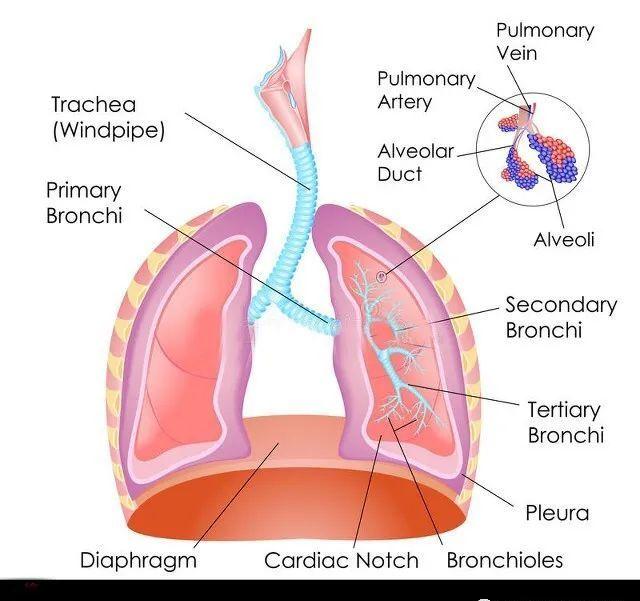Today my 8-year-old daughter asked me how big our lungs really are, which made me difficult, although I know the size of the lungs, but how to describe such an irregular form of organ to her? After thinking about it for half a day, I can only tell him that our lungs are hiding a "three-bedroom and one-room"? Now she is even more confused, let her grow up to explore it herself!
Why do we say that our lungs have three rooms and one living room? This is to say that the respiratory area in our lungs, an adult alveoli about 200-300 million, although the total area of each alveoli is very small, but it is a big number, about 100-200 square meters, is not a proper "three rooms and a living room"?

So how do the lungs organize so many alveoli together and "stuff" them into our lungs? Is that really exquisite? Our lungs are not a piece of iron, but composed of 5 different lung lobes, 3 leaves on the right, 2 leaves on the left, each leaf is divided into different segments, each segment is divided into sub-segments, and it is constantly divided into the smallest functional unit - the lobules of the lungs, which are like a bunch of grapes, each grape is a alveoli, and the stem that connects each alveoli is the bifurcated bronchial tube, which is the channel of gas, responsible for sucking air in and exhausting the exhaust gas. The reason why we want to divide into different lobes, segments and sub-segments, and not form a complete piece, is that we are afraid that part of the lungs will be damaged and cause the overall paralysis of the lungs, and also lay the foundation for our surgical operations, and the removal of one lobe and the other lobes can still work as usual.
After talking about the structure, let's take a look at the function of the lungs, many people think that the lungs are a respiratory organ, in fact, the lungs are simple, our lung functions are many, including immune function, chemical defense function, endocrine function, and even some people have studied the lung and part of the hematopoietic function, but these functions are some auxiliary functions, the main function of our lungs is still respiratory function, mainly responsible for absorbing oxygen from the outside air into the blood in the body, while excreting carbon dioxide in the blood to the outside world. Normal people breathe about 10,000 liters of air every day and emit about 360 liters of carbon dioxide.
The alveoli are surrounded by blood vessels, and air enters the alveoli and diffuses into the blood vessels
To complete this exhalation and inhalation to use the two functions of the lungs, one is the ventilation function, one is the diffusion function, the ventilation function is actually measured by the patency of the trachea, the diffusion function refers to the process of absorbing oxygen into the air of the lungs into the blood vessels around the alveoli, different diseases affect the function is not the same, such as bronchial asthma, chronic obstructive pulmonary disease, bronchiectasis mainly affects the former, interstitial lung disease, silicosis mainly affects the latter. Most lung diseases end up in these two groups.
The process of air entering the blood vessels around the alveoli from the alveoli and being carried away by the blood
The lungs are non-renewable, cut a piece less, due to disease and other reasons to destroy most of the lungs are not repaired, but the function of each lobe of the lung is not played to the maximum, so if there is a part of the lung broken, the other lobes will expand and enlarge to partially replace its function.